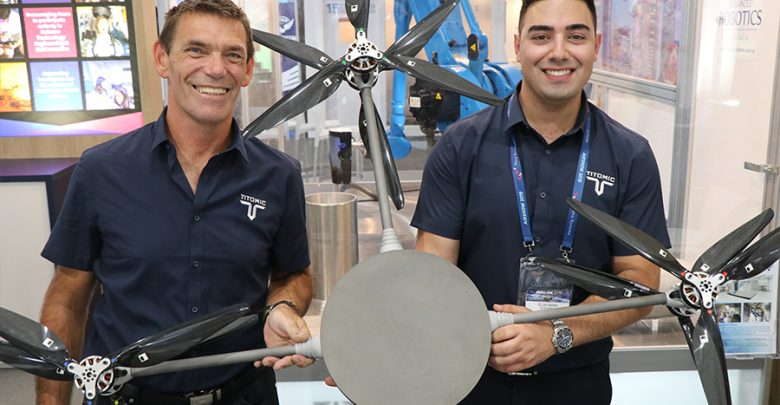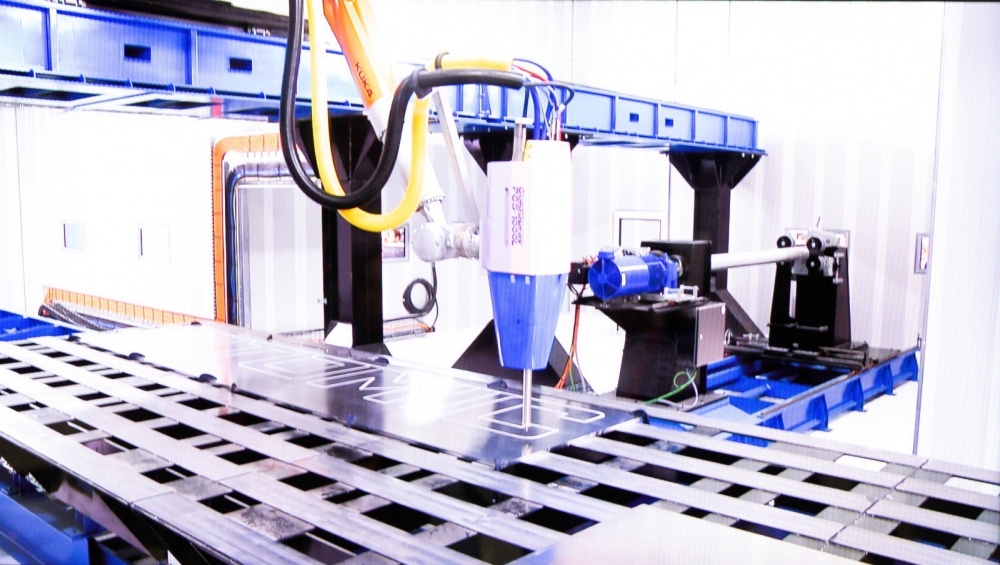Australian metal AM company Titomic reports that it has 3D printed the largest titanium unmanned aerial vehicle (UAV). The drone, which measures over 1.8 meters in diameter, was manufactured using the company’s rapid Titomic Kinetic Fusion technology—specifically its large-format TKF 9000, which itself spans 9 x 3 x 1.5 meters.
The UAV prototype produced by Titomic demonstrates how the company’s technology can unlock applications for titanium manufacturing. Using traditional production methods, the metal is expensive and notoriously difficult to work with. Titomic’s TKF additive technology, however, presents a way to produce titanium parts and products while still reaping the benefits of cost-effective production.
As a metal with a superior strength-to-weight ratio, titanium’s properties could be advantageous for many applications. In this particular case, the metal was used to produce a UAV with a strong, lightweight and robust design and ballistics protection. The prototype drone showcases TKF’s potential to produce parts for UAVs for the military and law enforcement applications.
In addition to UAVs, Titomic’s technology could also have broader applications in the defense sector. Armaments, for instance, which are traditionally produced using metal casting techniques, could be 3D printed using the TKF process, resulting in reduced production time and increased output.
Jeff Lang, Titomic Managing Director, said:
“We’re excited to be working with the global defence industry to combine Australian resources, manufacturing and innovation which will increase our sovereign capability to provide further modern technology for Australia and its defence force.”
The TKF process used in developing the titanium UAV was developed by Titomic in collaboration with CSIRO. The AM process uses supersonic deposition of metal powders, such as titanium, to manufacture parts with complex geometries as well as complex surface coatings of super alloys and dissimilar metals like nickel, copper, scandium and alloys like stainless steel, inconel and tungsten carbide.
The technology stands out for its ability to fuse dissimilar metals and materials, which enables the creation of parts with unique properties that would be impossible to manufacture using other methods. The company writes: “With the ability to incorporate multiple metal alloys and materials into single, heterogenous parts, TKF enables the production of parts which exploit the mechanical benefits of multiple high-performance alloys concurrently.”
The titanium UAV was produced at Titomic’s state-of-the-art R&D Bureau in Melbourne, which houses its large TKF 9000 metal 3D printer.
Source: 3D Printing Media Network


